"Every Child a Talker": 14 Tips on Early Childhood Speech & Language Development
In this article, Ms Kerr, Reception Lead Teacher, shares research and her insightful perspective on the growing epidemic of delayed speech development in young children, how a child learn best, and provides parents with 14 tips on what they can do to support their child’s language development and communication skills.
Children’s Problems with Communication: A Growing Concern
————

Humans are social creatures. Children throughout history have learnt to communicate from both their families and wider local communities. Unfortunately, the demands and pressure of modern society has led to a marked deterioration in children’s communication skills across the world. Although technology has allowed us to become better connected, the excessive use of screen time such as watching television and using tablets or phones has reduced quality and meaningful interactions for children, thus, affecting their language development in their early childhood years. Parents and key caregivers are observed using their phone more than interacting with their children on trips such as visits to the supermarket or the park. Screen time has also been proven to reduce children’s vocabulary and interest in reading. The emphasis on communication in the modern age is visual, which means children are increasingly finding ‘active listening’ a difficult skill to achieve (Stott and Gaunt, 2018).
Impact of COVID-19 on children's speech and language development
Social distancing as a result of the COVID-19 pandemic has had a hugely negative impact on children’s rich interactions with their peers and extended family members. Although masks are important and needed, they have obscured key social cues for children such as facial expressions which are critical for developing communication skills.
There is a growing body of opinion among professionals that more children are entering school with insufficient language or oracy skills that are not appropriately developed in early childhood as a result of these changes in society. In a study completed by the Basic Skills Agency, the teachers surveyed found that half of all children entering school are unable to speak audibly so that they can be understood by others, follow simple instructions, sing nursery rhymes or complete basic activities that are precursors to emergent Literacy and Mathematics (Public Health England, 2020)
What is Speech, Language and Communication?
————

There are a variety of ways to describe the words we need to connect with other people such as speech, language, communication, talking and speaking.
The Royal College of Speech and Language Therapists (RCSLT) in 2021 defines the terms speech, language and communication as follows:
" Speech refers to:
saying sounds accurately and in the right places in words.
speaking fluently, without hesitation, prolonging or repeating words or sounds.
speaking with expression in a clear voice, using pitch, volume and intonation to add meaning.
Language refers to:
understanding and making sense of what people say.
using words to build up sentences which are used in longer stretches or spoken language and to build conversations.
putting information in the right order to make sense.
Communication refers to:
being able to communicate to people and take turns as well as change language/communication to suit the situation; in effect, how we interact with others.
non-verbal communication, for example eye contact, gestures and facial expressions.
being able to consider another person’s perspective, intentions and the wider context."
How do Young Children Learn and Develop Communication Skills Best?
————
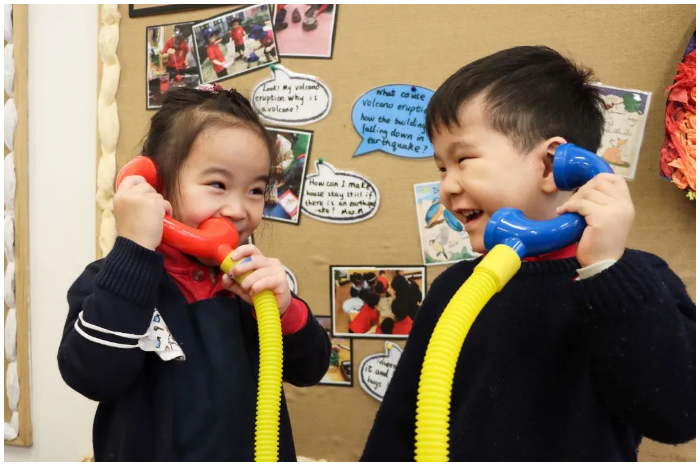
Whilst each child develops speech at a different pace, there are key milestones and stages in speech, language and communication development. Children begin communicating from the moment they are born; letting their mothers know they have arrived with their first cry, and then it develops through life as they hear, see, and interpret information from other people. Children communicate first with their parents, then with siblings and friends, and then with other adults such as their schoolteachers (Elks and McLachlan). The expression of communication or a child’s language begins with head, eye, and body movements, as well as through simple vocalisations and hand motions. Language expression progresses to words, sentences, and conversations through many methods including gestures, spoken words, sign language, pictorial language systems, and communication boards. This is also why movement and being active is important for language development in early childhood. It is through listening to adults modelling sentence structure and vocabulary that the following skills can be transmitted and learned (NHS, 2021).
Key Stages of Speech and Language Development

(I CAN Children’s Communication Charity, 2021)
How children’s communication develops has also been helpfully summarized as a ‘Communication Tree’.
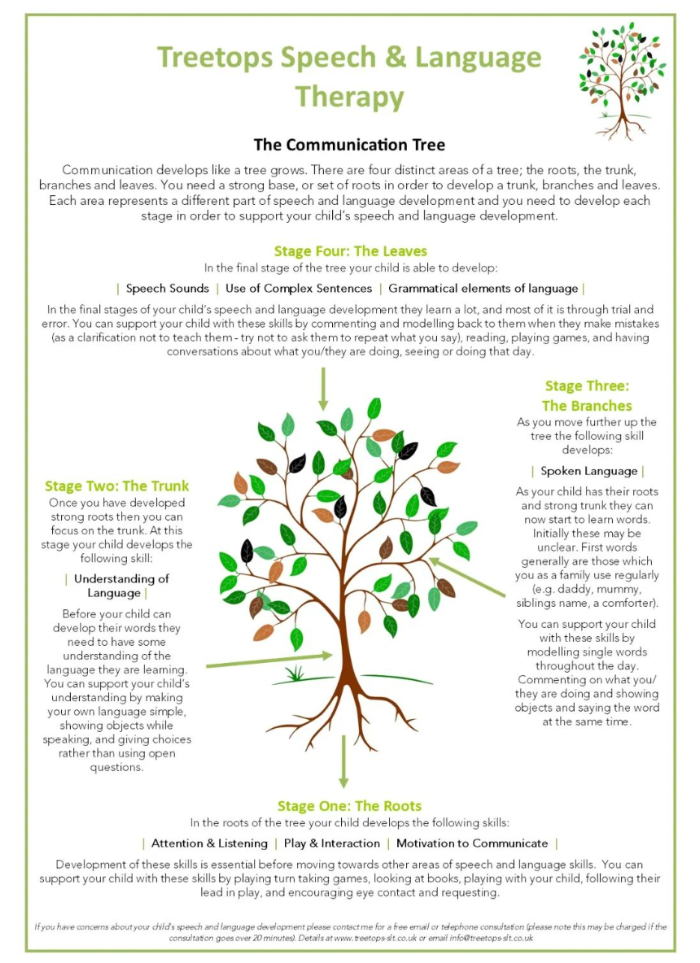
(Treetops Speech and Language Therapy, 2021)
Why Does Early Speech, Language Development, and Communication Matter in Early Childhood?
————
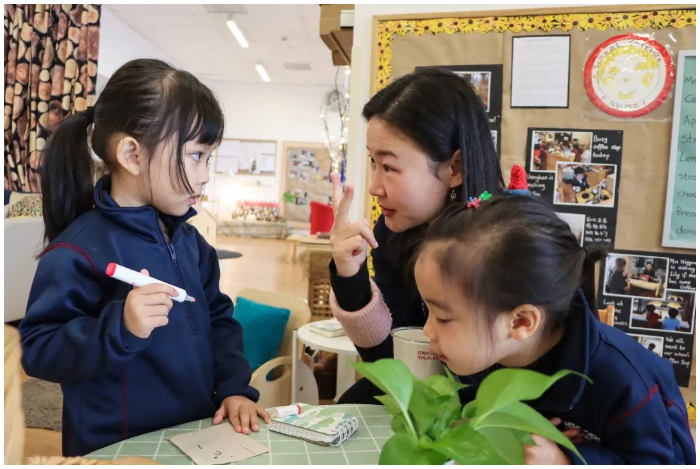
The ability to communicate is recognised as the most fundamental life skill for children: directly impacting on their ability to learn, develop friendships and on their chance of success in future life. Early language development and communication skills for children are also recognised as primary indicators of child wellbeing. Language development in early childhood contributes to a child’s ability to manage emotions and communicate feelings; to establish and maintain relationships; work in a team, to think symbolically and to learn to read and write. Research from the Institute of Education found that the quality and quantity of children’s vocabulary at age five is a strong predictor of success in GCSEs (Sammons, Pam, et al. 2014). Children with poor vocabularies in their early years continue to struggle when they start school and are typically a year behind their peers. A gap that continues to grow through primary and secondary education, culminating in poorer GCSE results. Their school lives are more likely to be characterised by difficulties including when it comes to paying attention, persistence, forming relationships or working in teams (Quigley, 2018).
Oral language provides the foundation to literacy skills, and it is why ‘Communication and Language’ is a prime area of the early years curriculum. The early learning goal for communication and language in the early years profile, which is completed at the end of Reception, is broken down into listening, attention, understanding and speaking.

(Department for Education, 2021)
How are we Supporting Children’s Early Speech, Language and Communication Development at Dulwich College Shanghai Puxi?
————

A strong Early Years education is imperative for children, alongside building strong and responsive parent partnerships.
Building Strong Family Connections & Sharing Communication Progress via SeeSaw
Firstly, the Early Years team builds strong relationships with families and keeps them regularly updated with the communication development progress of their child via SeeSaw and through personal meetings. SeeSaw has also been wonderful for families to share special learning moments from home. This provides rich opportunities for children to share their interests with their friends. The Early Years team also offer parent workshops to provide advice and answer questions from parents about how they can support their child at home. We are very excited about the new Parent Academy Workshops starting this Friday, 14 January 2022.

Enhancing Language Development Through Environment & Dual Language Support
Dulwich College Shanghai Puxi have developed stimulating and language rich environments that support children’s language development in early childhood, not only in English but in their home languages too. Environments are tailored to each child and foster talk, questioning and curiosity. We have a strong Dual Language programme, with regular staff training ensuring that staff are skilled in supporting children in their next steps, as well as understanding the most recent academic research in oracy. Children are assessed regularly using our Programmes of Learning and Language Profiles, ensuring progress in both speech and language development.
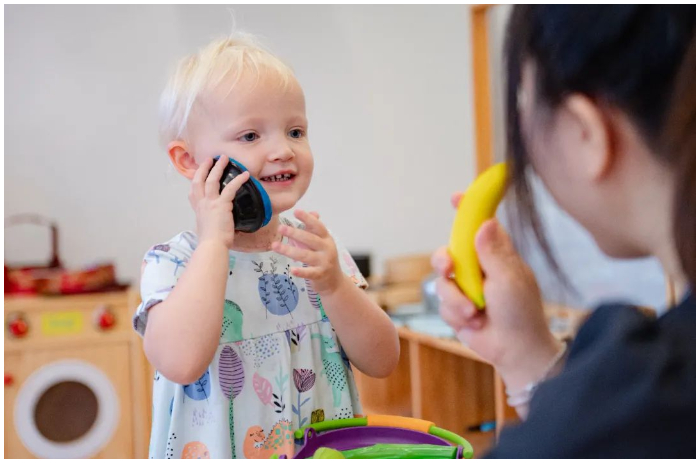
Empowering Language and Communication Skills Through The "Every Child a Talker" Programme
All Dulwich College Shanghai Puxi Early Years staff have been trained on the principles of the ‘Every Child a Talker’ programme. This was a national initiative in the United Kingdom to develop the language and communication skills of children from birth to five years of age. This has helped provide rich learning that is unique to every individual child, in every single class. Children in our Early Years love to inquire, ask questions and share their learning with others.
Speech and language studies have shown that a child may need to hear a word up to 500 times to be able to confidently understand what it means and use it in different contexts (National Literacy Trust, 2017). The Early Years Programmes of Learning at Dulwich College Shanghai Puxi provide many stimulating and relevant contexts for the children to learn and practice new vocabulary and develop communication skills. Reading beautiful books, singing, playing word games, play and rich talk opportunities such as lunchtimes and care routines are carefully planned for every day.
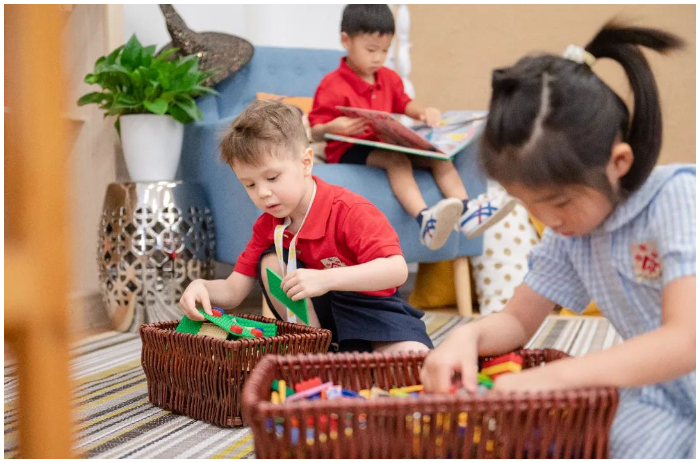
Enhance Early Years Communication Skills With Our Music Programme
Our outstanding music programme in the Early Years develops communication and listening skills for children, with every child attending a music lesson with a specialist music teacher in addition to their regular singing and music throughout the week with their class teachers. Our youngest children have the opportunity to perform on the stage in Community Times and for performances such as the Christmas show or the Reception productions. Last year the production of ‘Croak’ was incredible and built confidence in every child who performed.

Developing Core Skills Through Outdoor Learning and Physical Education
At Dulwich College Shanghai Puxi, we have beautiful outdoor learning spaces where core strength, coordination, movement, collaboration and listening skills are targeted. The PE team also provide specialist lessons in gymnastics, games, ball skills, dance and swimming. These allow the children to learn to listen and work together, as well as following instructions.
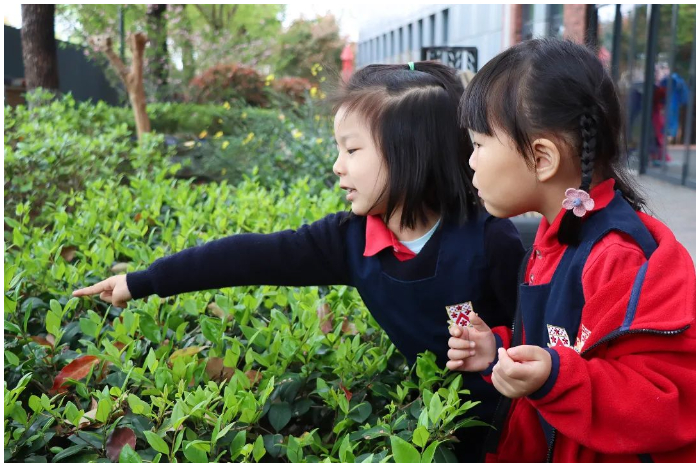
We develop multilingual learners who are confidently able to express themselves clearly and convey their feelings appropriately to others. Staff are highly skilled in helping children develop communication skills, which helps to deepen friendships with their peers and empathy for those around them, as well as talking about their feelings. This includes those in the youngest Toddler classes. Recently, I observed a child running to get a tissue to help another friend who had accidentally tripped and had started to cry. Our children are curious in every classroom and care for those around them. They are also eager to share their learning and achievements with friends and family articulately. Their deep friendships in school mean that deep interactions happen regularly throughout every day.

14 Tips for Parents Working with their Early Years Children at Home
————
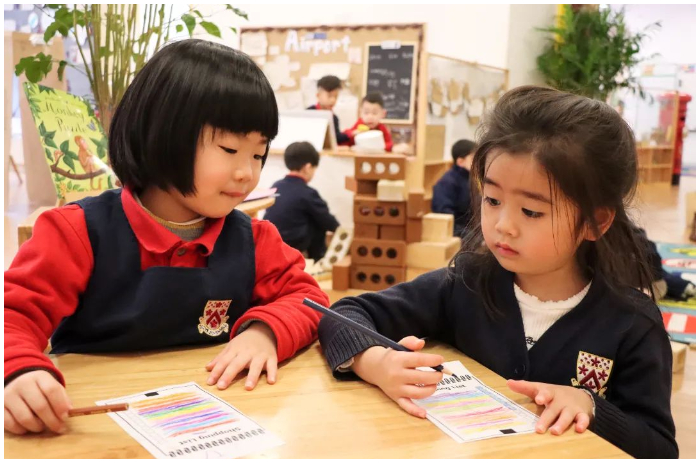
Here are some speech development tips adapted from the ‘Every Child a Talker’ programme that we hope parents will find helpful when playing, talking or reading with their child at home:
- Observe, wait and listen. Your child may be playing an interesting and imaginative game that you can join in with.
- Get down to your child’s level. This will give your child the chance to make eye contact with you and to watch your facial expressions.
- Let your child take the lead. Your child will learn more from an activity that they are interested in.
- Encourage your child to join in with play. Play is very important in encouraging the development of your child’s speech, language and communication skills.
- Speak to your child using your strongest language. Your strongest language does not have to be English. It is beneficial for children to learn more than one language, especially in the early years.
- Do not oversimplify language or use baby talk. Expose your child to a wide range of vocabulary in a relevant context or by reading a variety of interesting books.
- Reduce background noise. Turn off the television when playing or talking together. This will help your child to listen to what you are saying to them.
- Enjoy songs and nursery rhymes together. Repetition and actions will help your child to join you and have fun, supporting their language development in early childhood.
- Slow down your rate of speech. This will give your child more time to process what you have said and will encourage them to slow down whenever they are talking to you.
- Give your child at least ten seconds to respond to what you have said. ‘Thinking time’ is important and will help your child join in the conversation more.
- Repeat an instruction using the same words alongside an action. If your child is struggling to follow an instruction, repeat the instruction using the same words and with an action. This will allow them time to process what you have asked them.
- Reduce the number of questions you ask your child. Instead, comment on what your child is doing or expand what they said with adjectives.
- Emphasise the correct pronunciation. If your child makes a mistake, repeat the word, but show the correct pronunciation. For example, Child: “tat teep” Adult “the cats asleep, yes it is asleep”. Do not ask them to say it again.
- Have a regular family routine. Make sure you speak and comment during important times such as meal times and bed times.
(Department for children, schools and families, 2018)
(Aldher, 2021)
Together We Can Support Early Childhood Language and Communication Development
Reach out to the team at Dulwich College Shanghai Puxi for further information or advice. Please do attend our Parent Academy Workshops for more information on how to support your children’s speech and language development at home.
When schools and parents work together, they can ensure children's speech, language and communication needs are recognised and supported so their learning is successful. Strong foundations are vital for their future education, and these foundations begin with oracy and communication skills in the early years.
If you are a prospective parent who is interested in learning more about this topic and understanding how our professional Early Years practitioners support our students to achieve their age-related expectations and language development milestones, we encourage you to join our upcoming Early Years Open Mornings. Click ‘Here’ below to learn more and register for Open Mornings.
References
Aldher, Sophie. “Communication Development”
https://www.inspirepartnership.co.uk/, 2021
Department for Children, Schools and Families. “Every Child a Talker: Guidance for Early Language Lead Practitioners”
https://foundationyears.org.uk/wp-content/uploads/2011/10/ecat_guidance_for_practitioners_12.pdf, 2018
Department for Education. “Statutory Framework for the Early Years Foundation Stage: Setting the Standards for Learning, Development and Care for Children From Birth to Five.”
https://assets.publishing.service.gov.uk/government/uploads/system/uploads/attachment_data/file/974907/EYFS_framework_-_March_2021.pdf, 2021
Elks, Liz and Henrietta McLachlan. Early Language Builders: Advice and Activities to Encourage Pre-School Children’s Communication Skills. Elklan, 2009
I CAN Children’s Communication Charity “Ages and Stages of Development”
https://ican.org.uk/ages-and-stages-of-development-poster/, 2011
National Literacy Trust. “Tips for Talking to Your Young Child”
https://literacytrust.org.uk/resources/tips-talking-your-baby-and-young-child/ , 2017
NHS “Help your Child Learn How to Talk”
https://www.nhs.uk/start4life/baby/learning-to-talk/3-to-5-years/#anchor-tabs, 2021
Public Health England “Best start in Speech, Language and Communication”
https://assets.publishing.service.gov.uk/government/uploads/system/uploads/attachment_data/file/931310/BSSLC_Guidance.pdf , 2020
Quigley, Alex. Closing the Vocabulary gap. Rutledge, 2018
Royal College of Speech and Language Therapists “Speech, Language and Communication” https://www.rcslt.org/, 2021
Sammons, Pam, et al. “Influences on student’s GCSE attainment and progress at age 16: effective pre-school, primary and secondary project research report.”
https://dera.ioe.ac.uk/20875/1/RR352_-_Influences_on_Students_GCSE_Attainment_and_Progress_at_Age_16.pdf , 2014
Stott, Alice, and Amy Gaunt. Transforming Teaching and Learning Through Talk: The Oracy Imperative. Rowman and Littlefield, 2018
Treetops Speech and Language Therapy “The Communication Tree.”
https://www.treetops-slt.co.uk/post/the-communication-tree , 2021





